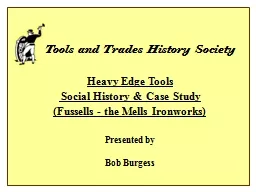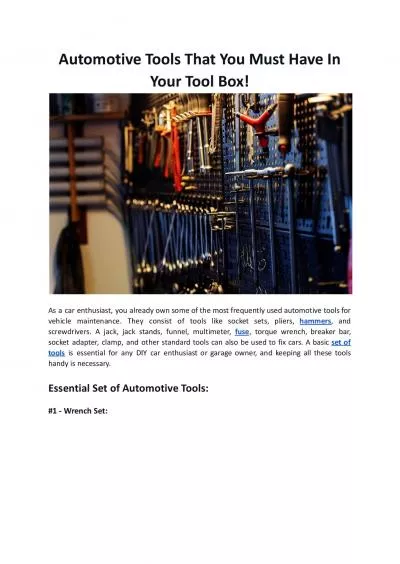PPT-Tools and Trades History Society
Author : tatyana-admore | Published Date : 2018-10-30
Heavy Edge Tools Social History amp Case Study Fussells the Mells Ironworks Presented by Bob Burgess Despite their importance tools are a little valued part
Presentation Embed Code
Download Presentation
Download Presentation The PPT/PDF document "Tools and Trades History Society" is the property of its rightful owner. Permission is granted to download and print the materials on this website for personal, non-commercial use only, and to display it on your personal computer provided you do not modify the materials and that you retain all copyright notices contained in the materials. By downloading content from our website, you accept the terms of this agreement.
Tools and Trades History Society: Transcript
Download Rules Of Document
"Tools and Trades History Society"The content belongs to its owner. You may download and print it for personal use, without modification, and keep all copyright notices. By downloading, you agree to these terms.
Related Documents














